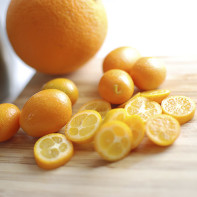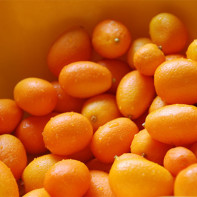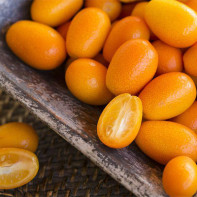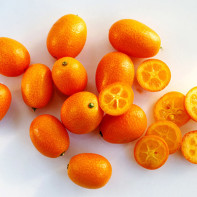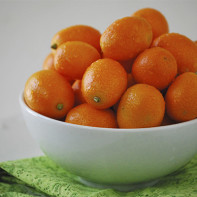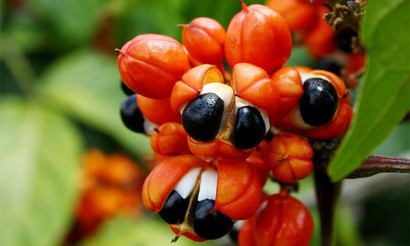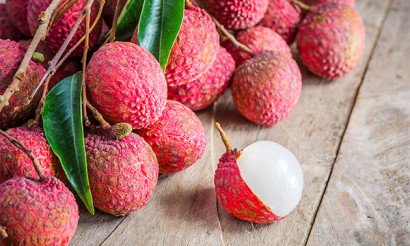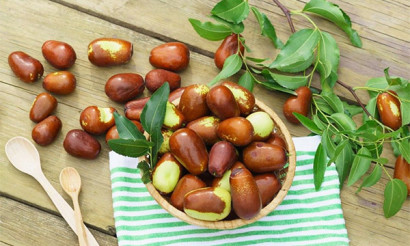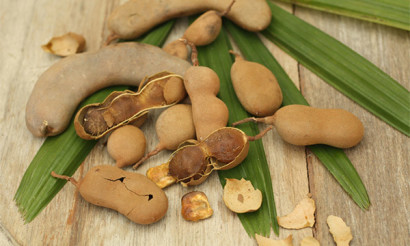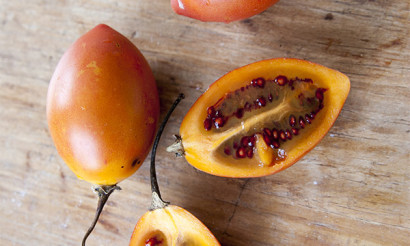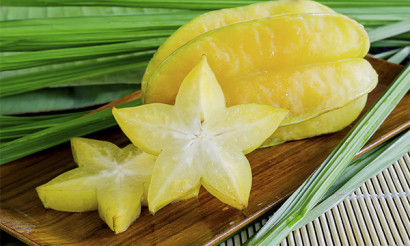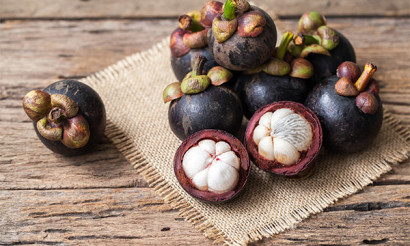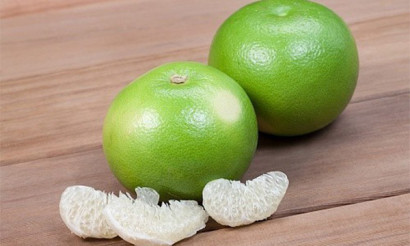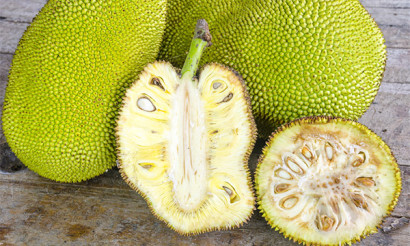Kumquat: benefits and harms to the human body
More recently, an unusual fruit has appeared on the shelves of many supermarkets and ordinary shops, which resembles an orange, only its size does not exceed 5-6 cm. The name of this curiosity is kumquat.
- What is kumquat and where does it grow
- Views
- Composition and calorie content
- Useful properties of kumquat
- For women
- For men
- During pregnancy
- When breastfeeding
- For children
- When losing weight
- The benefits and harms of dried kumquat
- What is the use of dried kumquat
- The use of kumquat in medicine
- Kumquat in cosmetology
- Harm and contraindications
- How to choose and store kumquat
- How much is kumquat
- How to eat kumquat
- How much can you eat per day
- Is it possible to eat with a peel
- What can be cooked from kumquat: recipes
- Jam
- Compote
- Candied fruit
- Kumquat Tea
- Interesting Kumquat Facts
What is kumquat and where does it grow
The fruit belongs to citrus fruits, grows on a small tree, reaching a height of 4.5 m, but most often it does not exceed 2.5 m. The homeland of citrus is Southeast Asia, specifically China, but it is cultivated in Greece, in the south of the USA and Japan.

The kumquat fruit is bright yellow, the leaves are ellipsoidal, dark green in color. Since the plant has been at rest for a long time after wintering, it blooms only in the middle of summer for several days. Often there is repeated flowering.
The fruit looks very similar to a small orange, very juicy, tastes sweet, with a slight acidity, like a mandarin. The fruits ripen at the end of the year.
Views
Kumquat is the smallest citrus fruit, it is called differently in different countries. However, most often - a "golden apple" (the Chinese gave it the name), the official name is fortunella.
The plant has several popular species, which will be discussed further:
- Nagami. Also referred to as Fortunella Margarita. This is perhaps the most popular species that can be found on sale in almost every major city. The plant looks like a large shrub or small tree. Blossoms in white flowers, brings fruits all year round. It can tolerate frost, grows rather slowly, prefers acidic soil. It can be grown even in an apartment. In winter, watering is moderate, in summer - plentiful.
- Nordmann. This kind of kumquat is very similar to Nagami, it is also called Nordmann Bessemyanny. From the name we can conclude that its distinguishing feature is the lack of seeds. The plant is very rare, it is grown only in California, USA. The taste is similar to the Nagas, but the shape is somewhat different. The plant also blooms in summer, the fruits are harvested at the end of winter. It can also be used to decorate the interior and courtyard.
- Malay Kumquat. It got its name due to the fact that it grows mainly on the territory of the Malay Peninsula. The plant is usually used for decorative purposes, for example, it makes an excellent hedge. The fruits are the largest of all species, but they contain a lot of small seeds. It does not tolerate low temperatures.
- Maeve. The fruits of this species are very tasty, they are recommended for fresh consumption. It is believed that this is a natural hybrid of Nagami and Marumi. The fruit is somewhat reminiscent of a large lemon. It also blooms in summer, bears fruit at the end of winter. In the fruit there are very few seeds, in some they are almost completely absent. Although it is not so frost-resistant, it is still able to tolerate low temperatures.
- Hong Kong Kumquat. This very small and prickly plant grows only on Hong Kong Island and in a small surrounding area. The fruits are bright orange, very small, rarely exceed 2 cm, they are not eaten. The plant is used only as a seasoning, since the fruits are not juicy and with large grains.
- Fukushi. It is also called Obavata or Changshu. It is this type of kumquat that is best suited for growing in the house, has a lush crown. The fruits are orange in color and look like a pear, tasty and juicy.
- Marumi. This kumquat is very similar to Nagami, but with spikes. The fruits are suitable for eating, they are slightly smaller in size than the Nagami, a bright, golden yellow color.
- Variegated kumquat. The plant officially appeared in the 90s of the last century and is an artificially bred variety. The closest relative is Nagami, from which he differs in light leaves. The fruits are juicy and sour.
Composition and calorie content
Kumquat fruits are classified as dietary, as the calorie content of the fruit is only 70 kcal per 100 g.
Energy value per 100 g:
- Proteins - no more than 2 g.
- Fats - almost none.
- Carbohydrates - about 10 g.
The kumquat also contains insoluble dietary fiber. As for the chemical composition, it simply contains a huge amount of useful substances: vitamins of groups B, C, A and E, lutein, alpha carotene, nicotinic acid, as well as micro and macro elements: iron, magnesium, phosphorus, potassium, zinc and other
Useful properties of kumquat
For women
There is no woman who does not want to look beautiful. Due to the presence of a large amount of vitamin E on women, the fruit acts especially. This vitamin is called female or beauty vitamin, it is even released as a separate drug.
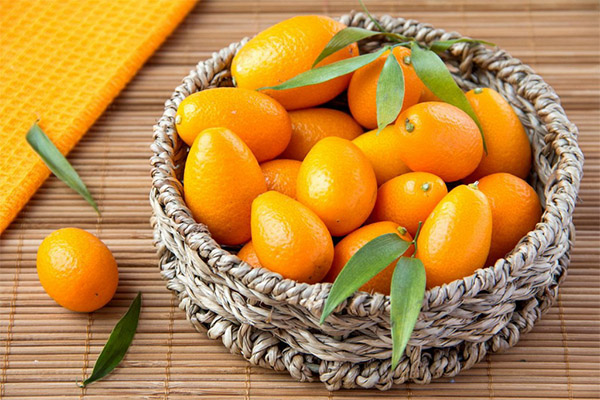
Vitamin E protects the cells of the body from harmful effects and restores them, making the skin beautiful and supple. It stimulates the formation of protein and new cells. With a sufficient amount of hair, the hair becomes soft and fluffy. With PMS, it significantly reduces discomfort and pain.
Vitamin A also plays an important role. It protects the body from viruses and cell aging. It can also be attributed to the group of vitamins of youth. It is a natural antioxidant, improves eyesight and hearing, like vitamin E, promotes rapid renewal of the epithelium, making the skin healthy and beautiful. In addition, it is an excellent tool for the prevention of cancer. Vitamin A contributes to the production of keratin - the material that forms the basis of hair, so its sufficient amount directly affects their growth and strength.
For men
It is no secret that a strong half of humanity undergoes various diseases of the cardiovascular system at a fairly early age. Many factors contribute to this: malnutrition, lack of physical activity, ecology, heredity, etc. Kumquat is one of the few fruits that can be used as a remedy. It prevents the development of most diseases associated with the cardiovascular system.
Unhealthy foods contain large amounts of cholesterol, which can trigger many diseases of the heart and blood vessels. It also forms plaques on the walls of blood vessels and coagulates blood, which can be the main cause of stroke. Phytosterols in kumquat have a similar structure, but significantly reduce its absorption and excrete from the body.
Do not forget about the iron, which is also a lot in the fetus. This element is extremely important for the body of an adult male. Iron is directly involved in the formation of hemoglobin and hematopoiesis, delivers oxygen to each cell.
During pregnancy
This small citrus fruit will be an excellent source of vitamins and valuable elements for the expectant mother. It should be noted that this is a highly allergenic product, therefore, in the second half of pregnancy, it is necessary to reduce its consumption.
What is kumquat useful for pregnant women:
- calms the nervous system and improves sleep;
- removes toxins from the body;
- positively affects the work of the digestive tract;
- normalizes metabolism and reduces blood sugar;
- removes anxiety;
- due to the presence of fiber, it eliminates constipation;
- increases the protective functions of the body.
Immediately before the birth itself, it is better to completely abandon the use of kumquat so that the child does not develop an allergy.
When breastfeeding
During breastfeeding, the mother has to adhere to a strict diet so that the baby grows healthy and strong.Although kumquat contains many useful elements, and vitamin A improves lactation, it should still be excluded from the diet. As mentioned earlier, a fruit can cause an allergy in a child.
For children
As for children, you can give this exotic fruit from 3 years of age. But it is necessary to introduce it into the child’s diet gradually, gradually increasing the amount.
What is kumquat useful for children:
- The fruit contains a lot of vitamin C, which is so important for the developing organism, because it helps to increase immunity and participates in the metabolism.
- Kumquat has calcium and phosphorus - building materials for the skeletal system.
- Fiber and other substances regulate the amount of sugar in the blood of a child, preventing the risk of diabetes.
- Iron is an important element involved in hematopoiesis.
- Magnesium provides protection to the cardiovascular system.
- The fruit helps to cope with stress, improves sleep, calms the nervous system.
Children need to start giving kumquat with half the fruit, and for some time to bring this amount to several pieces. However, sometimes you need to take a break. After the first dose, you need to carefully monitor the condition of the child's body. If redness or itching appears, then its use should be discarded.
When losing weight
Due to its beneficial properties, this fruit is often included in diets. Kumquat has a positive effect on metabolism, accelerating it, removes excess fluid. Insoluble dietary fiber quickly saturates the stomach, thereby satisfying hunger. In addition, they remove toxins and food debris that cause overweight.
It is also worth mentioning that the product has very few calories, so it is impossible to gain weight with its use. Experiments have shown that with regular use of kumquat per month, you can lose from 2 to 8 kg without resorting to a special diet.
When compiling a diet menu, do not give preference to one kumquat. Along with it, you can eat many other products, but you should avoid dishes containing a large amount of fat, as well as give up sweets and limit the consumption of flour products.
As for dairy products, they should be with a small percentage of fat content. The advantage of kumquat is also that it contains many useful elements and vitamins, which are so necessary when restricting nutrition.
The benefits and harms of dried kumquat
Since ancient times, people have been trying to preserve certain foods for a long time - so certain fruits began to dry. Dried kumquat has recently appeared on sale, it is small in size, about the size of a walnut, it is red, yellow or green. By the way, the tradition of drying citrus fruits supposedly appeared in China, on the territory of modern Guangzhou.
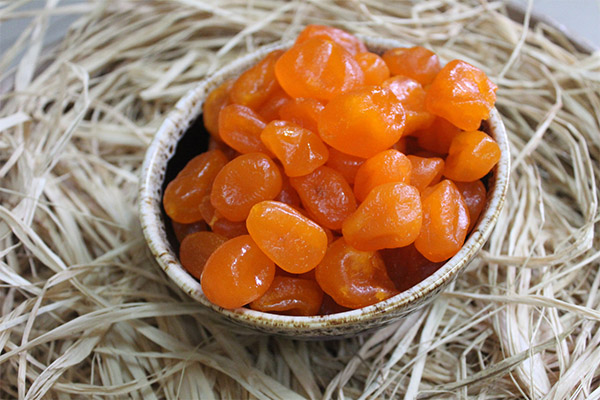
Dried kumquat is an underrated fruit that is used as an adjuvant in the treatment of many diseases. Its regular eating is the prevention of gastrointestinal diseases. Dried kumquat preserves almost all useful substances and vitamins, so it can easily take the place of expensive vitamin complexes. It perfectly compensates for the lack of minerals and vitamins, removes salts of heavy metals, boosts immunity, normalizes stool and metabolism.
Even in ancient China, dried kumquat was successfully used to treat colds, runny nose and cough. It contains many essential oils and substances that have antifungal and antibacterial properties. It is dried kumquat that is an excellent tool for cleaning the digestive tract, lowering cholesterol and eliminating toxins and toxins. To feel the improvement, it is enough to eat 5-7 fruits in the morning.
Talking about the dangers of dried kumquat is somewhat wrong, because the fetus cannot cause direct harm. However, like all products, it should be consumed in moderation. It is also worth paying attention to individual intolerance.
Kumquat is a dietary product, but do not forget that it contains a lot of carbohydrates, which can add extra pounds to those who are obese or prone to overweight. The citrus fruit can cause harm to those who have kidney problems, because when removing poisons and toxins from the body, it drives them through natural filters and causes complications.
What is the use of dried kumquat
One of the methods for harvesting fruit is curing, in which it is cooked. If we take into account that the fruit consists of 80% of water, then when dried, it decreases in size several times and becomes very small.
Sun-dried kumquat contains the same amount of vitamins and minerals as fresh, so it can replace any complex of vitamins. Useful properties of dried kumquat;
- It is an excellent antifungal and anti-inflammatory agent;
- improves intestinal motility and stomach function;
- boosts immunity;
- removes toxins and toxins;
- reduces the body's absorption of cholesterol;
- counteracts cell aging;
- improves vision and helps in the treatment of the retina;
- helps with weight loss;
- calms the nervous system, promotes quality sleep and improves mood;
- Effectively combats a hangover.
The use of kumquat in medicine
Today, kumquat is included in the list of fruits and plants that have significant healing properties. In the expanses of the former CIS, this citrus fruit is known relatively little, but in Asia it is widespread and used in folk medicine to treat many diseases.
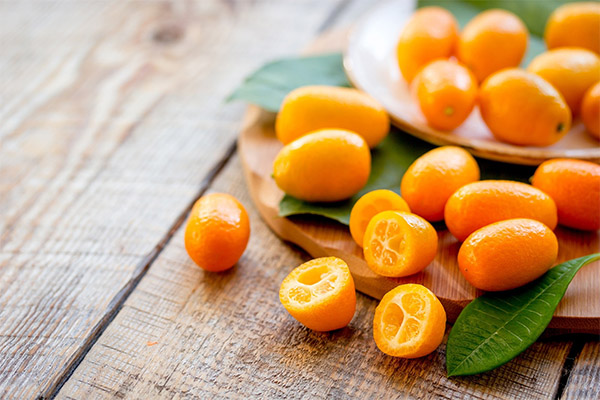
- Kumquat contains many more vitamins and nutrients than any citrus on the planet. It is especially appreciated for the content of a large amount of vitamin C, which provides the body's resistance to most viruses and increases immunity.
- Also, kumquat does not accumulate nitrates, which is especially important when using it as a concomitant drug. Regular consumption of this fruit, both fresh and dried or dried in the midst of an epidemic of viral diseases, will help protect against them.
- In eastern traditional medicine, kumquat is used to treat ulcers and diseases of the duodenum. It is prescribed as an adjuvant in case of an upset gastrointestinal tract, in particular with constipation.
- Regular consumption of citrus is the key to a strong nervous system, good sleep and good mood. Due to the fact that it perfectly removes toxins from the body, it is advisable to use it for a hangover. After consuming only 200-300 g of this fetus, nausea and headache will go away, the stomach will begin to work, and the general condition will improve.
- Nutritionists recommend the use of kumquat for obese people, as it increases metabolism and activates metabolism, which is important in the treatment of the disease.
Kumquat in cosmetology
Eating fruit is beneficial for the general condition of the body, while kumquat seed oil is used in cosmetology. In combination with other oils, it copes with stretch marks and is used to treat scars. Only 3 drops added to the body cream will help smooth the skin, make it smoother.
Also, kumquat seed oil is used to cleanse oily skin and give it elasticity. Regular use will always look fresh and well-groomed. For this purpose, you can add 2 drops of oil to the cream or to the base oil (almond, macadamia, coconut) and use at night.
Kumquat seed oil can be added to any cosmetics. It is gentle and delicate, it has a lot of vitamin A, which contributes to the production of collagen, which protects the cells of the dermis from the effects of free radicals.
Harm and contraindications
As noted earlier, talking about the dangers of kumquat is inappropriate, the fruit can not cause damage to the body. However, you need to understand that the fruit is exotic and you need to treat it carefully, introducing it into the diet gradually.Kumquat, like all citrus fruits, is a highly allergenic product, therefore, an allergy to it or individual intolerance is a fairly common phenomenon.
There may also be problems if you eat a lot of it. The fact is that citrus has a low calorie content, which means that too many fruits can be eaten very easily. This can lead to diarrhea, flatulence and bloating.
A high amount of carbohydrates can be a problem for diabetics, but this does not mean that they should not eat it. Also, you need to be careful about the fruit in acute gastritis and exacerbation of stomach ulcers. It is not recommended to use it in the diet for people with diseases of the kidneys and the genitourinary system, since it creates an additional burden on them.
During pregnancy and lactation before use, you must always consult a specialist. If this is not possible, it is better to abandon the use.
How to choose and store kumquat
Like all citrus fruits, you need to buy kumquat and store it correctly. When purchasing a product, you need to pay attention to the following:
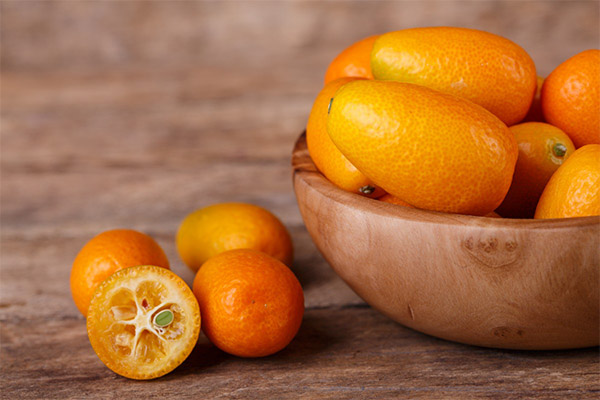
- The kumquat color should be saturated, expressive. Although many are advised to choose only orange fruits, you need to pay attention to the variety, since there are light green and yellow kumquats.
- The peel should be smooth and shiny.
- Kumquat should be moderately hard. So, a fruit that is too soft means that it is overripe, therefore it cannot be stored for a long time, and too hard - it is unripe.
- There should be no damage to the peel.
As for storage, contrary to popular belief, if you create suitable conditions, then even outside the refrigerator, citrus can lie for a very long time. However, in an apartment, it should not be stored for more than 4 days. In the refrigerator, the fetus can lie up to 3 weeks without any changes.
The kumquat season begins in November and ends in spring, at which time the largest selection on store shelves. To eat it all year round, the fruit can be frozen, dried or dried. Freezing kumquat is easy even at home.
How much is kumquat
The average price of fresh kumquat in supermarkets and in the markets of Russia and the CIS ranges from 625 to 1000 rubles per kilogram. The cost of dried or dried from 300 rubles per kg.
How to eat kumquat
How much can you eat per day
As for the quantity, this is a rather individual question. Usually it is recommended to consume no more than 300 g per day, eating more is undesirable. In addition, the ability of the fetus to remove toxins and toxins can create an increased burden on the kidneys and genitourinary system, which will negatively affect the state of health. It should also be borne in mind that this is a "not native" fruit, so you need to be careful about it.
Is it possible to eat with a peel
Kumquat can not only be eaten with peel, but also needed. This is the only citrus fruit that has this feature. Also, it is in the peel that contains a number of substances that perfectly fight fungal infections, and are also natural antiseptics.
What can be cooked from kumquat: recipes
Jam
Making kumquat jam is easy. It does not require special skills or knowledge in cooking.
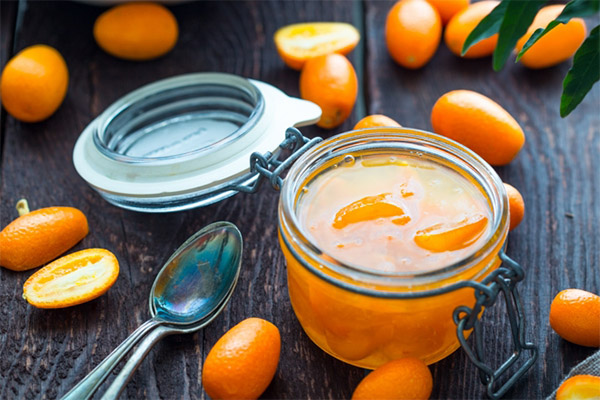
What is needed:
- Kumquat - 0.5 kg.
- Orange - 1 pc.
- Granulated sugar - 0.7 kg.
How to cook:
- The kumquat fruits are thoroughly washed with running water.
- Lay on a towel and leave for half an hour to dry thoroughly.
- Then each fruit is pierced in several places with a regular toothpick or skewer.
- Peel the orange and squeeze the juice.
- Juice is mixed with 100 ml of pure water and added to granulated sugar.
- The mixture is heated to a boil and cooked over low heat until syrup is obtained, stirring constantly.
- The resulting syrup is poured into the fruit, covered with a clean cloth and left for 4-6 hours.
- After this, the fruit, along with the syrup, is put on fire again, brought to a boil and boiled for 20 minutes.
- The procedure is repeated several times.
- After cooking, jam is consumed immediately or closed for the winter.
Compote
It is worth noting that kumquat itself is a fairly versatile product, you can prepare many desserts from it and add to dishes. As for the compote, it turns out to be quite acidic from these citrus fruits, so it's better to add other fruits.
What is needed:
- Citrus itself - 50 g.
- Strawberry - 100 g.
- Sweet Cherries - 50 g.
- Water - 2–2.5 liters.
- Sugar - 3-4 tbsp
How to cook:
- To begin with, kumquat is prepared: washed in hot water and cut in half.
- Cherry sorted out, throwing rotten and removing tails. With strawberries do the same. If it is large, then it is better to cut it.
- Bring the water to a boil, add sugar, mix thoroughly, reduce heat.
- After 10-15 minutes, add all the fruits and cook for 1 hour, stirring occasionally.
- When the compote cools down, it is taken away for storage in the refrigerator or served to the table.
Candied fruit
What is needed:
- Kumquat - 10-15 pcs.
- Granulated sugar - 1 cup.
- Water - 1/2 cup.
How to cook:
- Citrus fruits are washed thoroughly.
- Then they are cut across, approximately 0.5 cm thick, seeds are removed.
- Syrup is made from water and sugar.
- Pour chopped kumquats and leave for an hour.
- Then the syrup is drained and the blanks are laid out on parchment paper.
- Preheat the oven to 180 ° C.
- Put the baking sheet in the oven and bake for about an hour, then take it out, turn the slices over and again return to the oven for 10-15 minutes.
- After cooling, candied fruits are laid out in containers, so it can be stored for several months.
Kumquat Tea
Ice tea is especially tasty.
What is needed:
- A bag of black tea.
- A few sheets of mint.
- Kumquat.
- Honey.
How to cook:
- A tea bag is brewed in the usual way.
- Then add a few leaves of mint or lemon balm, let stand for several minutes.
- After that, kumquat is cut and several slices are put in tea.
- Allow to cool, add honey to taste.
Interesting Kumquat Facts
- Kumquat is the smallest citrus fruit in the world.
- In Europe, they found out about him only in the XVII century. From that moment he began to be cultivated in Greece.
- Some varieties are used as snacks for alcoholic beverages (like olives).
- In Asia, particularly China, the fruit is considered medicinal and is used to treat ulcers and diabetes.
- This is the only citrus fruit that is consumed with the peel.
«Important: all information on the site is provided exclusively in fact-finding purposes. Before applying any recommendations, consult with a profile specialist. Neither the editors nor the authors are liable for any possible harm caused materials. "


